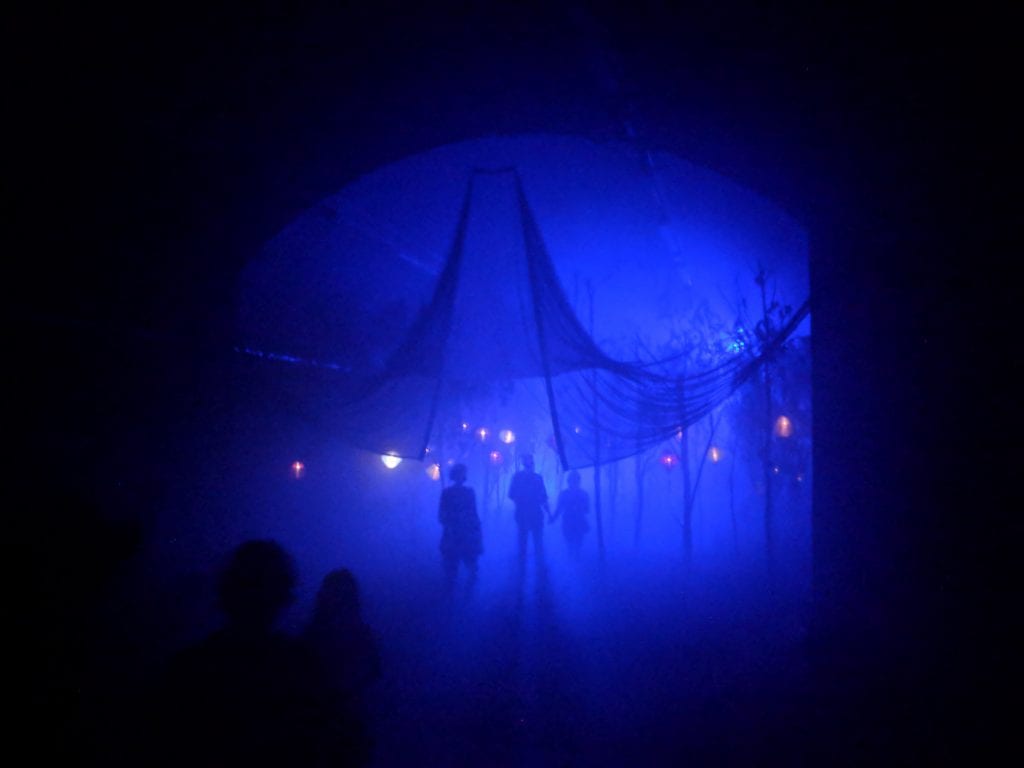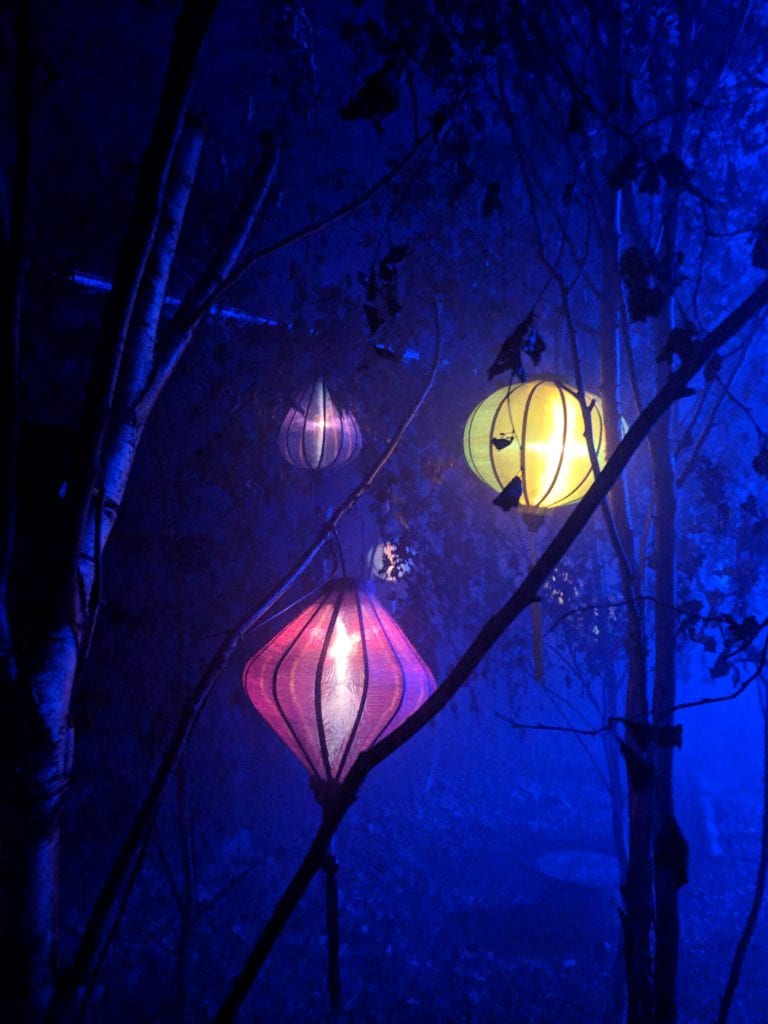I entered into the first room of Sounds and Sorcery at The Vaults unsure what to expect, but was delighted to see the interesting first step in the experience—projections of human outlines on the ceiling above circular cushioned furniture communicated wordlessly that we were supposed to lay on our backs and watch a projection on the ceiling. Settling in wearing my personal headphones I waited for the visual experience to begin. Unfortunately, the actual animation presented along with the music was less exciting than the experience of entering the space; a series of musical instruments spun, grew, shrank, and transformed in a symmetrical circular projection on the ceiling that felt oddly representational and continued to a point where I began to feel bored.
While further sections of the “immersive music concert experience” were more engaging, this beginning predicted the rest of my experience in The Vaults. I was intermittently extremely engaged and slightly disappointed with different sections of the varied experience. I found it to be an interesting exploration of the possibilities of immersion, if one that could have stood to lean into immersion more for a better result.
The design of the spaces on the whole was quite beautiful, and it was a joy to explore these large areas and see what had been done with set, props, and light to create a world to go along with the music of each section, inspired by the animation of Fantasia. Exploring these areas was a lovely experience, and I especially enjoyed when I got glances of the actual form of The Vaults themselves and how the design worked with this found space. However, I did not realize until almost half-way through my night that there were intended start times for the ideal experience of a narrative with the music in each room, communicated through somewhat confusing light-up clocks in the hallways. The beginning instructions could perhaps have done better to inform the audience of this, and I was a bit disappointed to realize I may have missed some of the intended experience. However, once I realized this it was delightful to see how changes in light along with the music really could create a narrative along with the music in rooms such as The Rite of Spring.
As far as the “theater” aspect of immersive theater in Sounds and Sorcery, I would have loved a little more. As one of my classmates noted, this felt less like immersive theater and more like wandering through beautiful spaces to find proscenium theater. The sections with performers all were surprisingly traditional in format, with separate audience and performer space as well as quite specific time schedules. I enjoyed the performances, but they left me wondering why these were the only places with human performers in the experience. Dance or movement by performers scattered throughout the spaces really could have brought to life the immersive theatrical experience of the evening. Leaving these beautifully designed immersive spaces empty of performers felt like a bit of a waste.
On the whole, the set design was the strongest and most compelling aspect of the experience. The very ending was absolutely beautiful. After a slightly disappointing projection to music on a scrim, and a jarring voice telling me to take off my headphones, I watched a beautiful forest with hanging paper lanterns slowly appear through the scrim. At first I was unsure if I was looking at another projection, but as the sounds of beautiful choral singing grew in volume and harmony throughout the space I saw the depth of the built environment and the scrim lifted in the middle, revealing a path to walk through. The joy of Sounds and Sorcery lay in getting to explore these beautifully designed and lit spaces along with beautiful music, and this ending was a wonderful example of this. I just wish a little more theater was sprinkled throughout these spaces to bring the experience to the next level.

